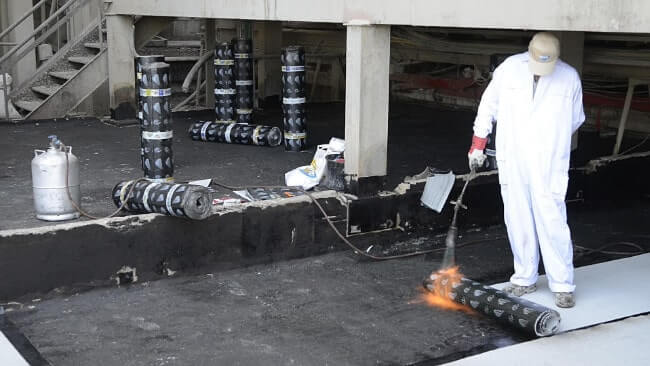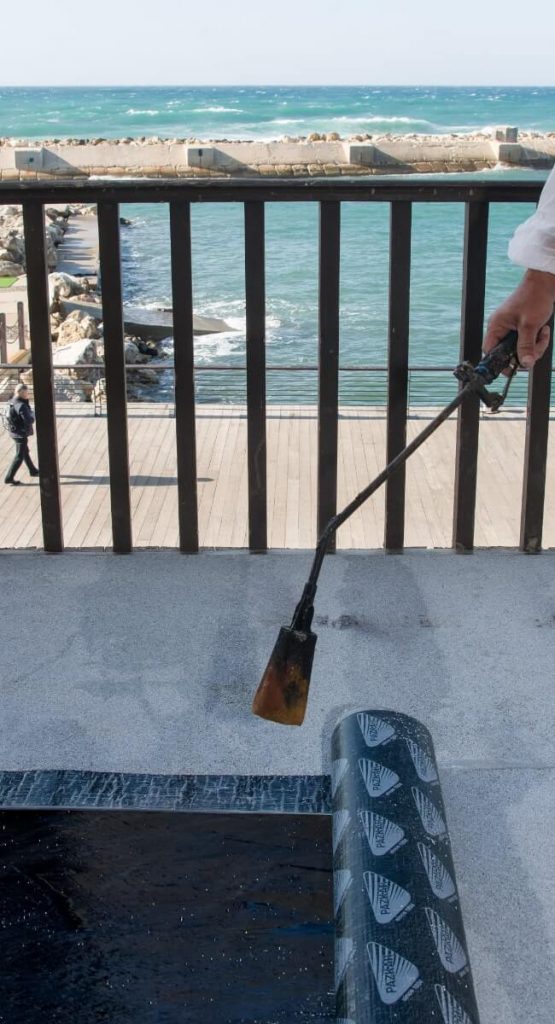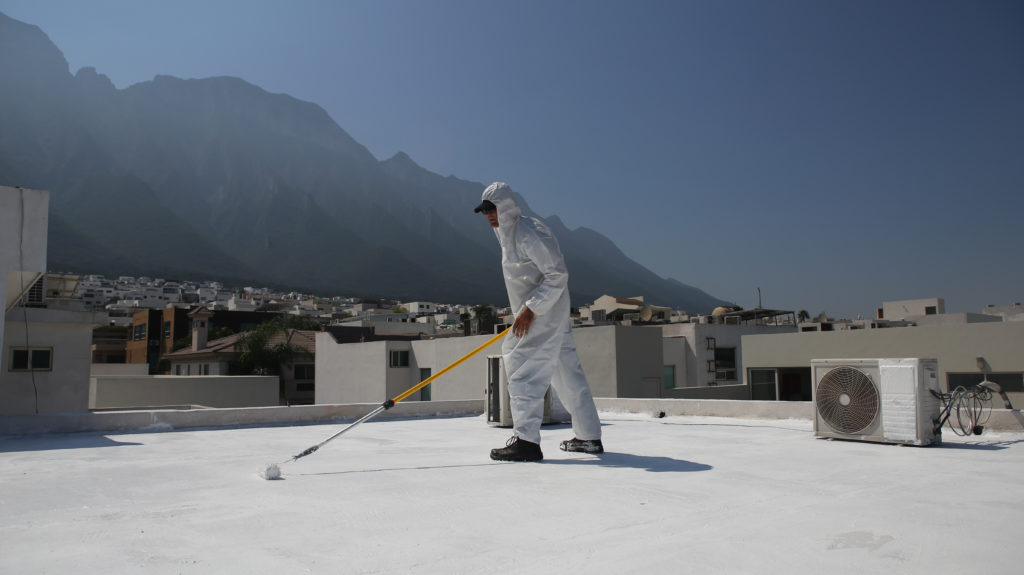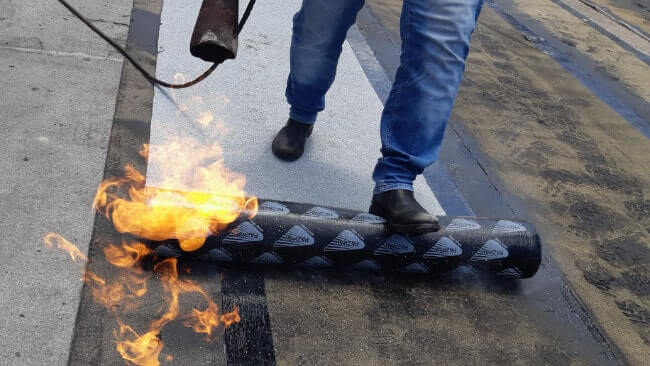Roof waterproofing is a professional action intended for all building types, residential and attached buildings alike, and its purpose is: preventing seepage of rainwater from the roof surface inwards and onto building walls, and optimal drainage of rainwater. It is important to note roof waterproofing problems are strongly felt in building apartments over time, where damp stains, mold signs and fungus on walls (exterior and interior) are distinct signs indicating some failure or defect in roof waterproofing infrastructure.
Waterproofing and dampness problems – the most common construction defect in Israel
Of all construction defect types discovered during home inspection in new and old buildings alike in Israel, the dampness problem is most common, in most cases indicating a construction and planning defect in waterproofing infrastructure. The appearance of wetness signs in the home/apartment wall area can lead to ongoing damage in the building area including among other things: paint peeling, mold stains, musty smells, rust stains, cracking of ceiling systems, weakening of iron rods in ceilings and support pillars and more. Importantly, phenomena like mold and efflorescence (fungus) can lead to breathing difficulties among building residents, so the presence of dampness signs in the apartment requires immediate treatment.
So when is roof waterproofing required?
Roof waterproofing is required in several main situations, including:
- In cases of wall dampness in the building and/or on walls with signs indicating a dampness problem (paint peeling, musty smells, fungus, mold signs, etc.).
- In cases where the existing waterproofing system is worn out and faulty due to material fatigue.
- In cases where waterproofing infrastructure failures were discovered during home inspection.
Importantly, roof waterproofing is an integral part of the construction process for all new building types. In cases where waterproofing work is professionally implemented according to standard requirements, building waterproofing infrastructure lasts an average of 10 years, during which no new waterproofing is required, excluding basic maintenance actions.
Roof waterproofing – how?
Roof waterproofing is implemented using two main waterproofing methods:
- Roof waterproofing using bituminous membranes.
- Waterproofing with white acrylic sealants.
Importantly: in both waterproofing methods, properly preparing the roof surface is very important, including among other things: thorough roof surface cleaning, removing remnants of the old waterproofing system and physically lifting all elements on the roof (water heaters, drains, AC units, etc.). Note – faulty roof surface preparation can cause air bubbles in waterproofing materials, potentially impairing waterproofing effectiveness.

Choosing the waterproofing method – what’s important to know?
In cases of roof waterproofing in old buildings, it is advisable the waterproofing method is chosen according to existing waterproofing infrastructure, given that certain waterproofing materials fail to optimally “bond” to other materials, therefore using a waterproofing material that does not properly “bond” to the existing material can lead to gaps between waterproofing layers, impairing long-term waterproofing effectiveness.
What's important to know about bituminous membranes?
Roof waterproofing using bituminous membranes is currently considered the most effective waterproofing method for new, exposed concrete roofs and for installing a new membrane layer over existing membranes. However, bituminous membranes can also be used on roofs previously tarred if the existing tar layer cannot be repaired but can be fully removed.
The bituminous membranes come in different sizes, joined together by welding. The bituminous membranes differ according to their characteristics, generally classified into two main types: SBS and APP waterproofing membranes, both intended for waterproofing flat and inclined concrete roofs.
Roof waterproofing using bituminous membranes must be performed using standard membranes suited to the Israeli standard (1430/3), indicating high membrane quality and suitability for especially harsh weather conditions. Various accessories are also used during waterproofing including: “Kalkar” boards made of polymer materials used for roof insulation, bitumen felt which is essentially foamed lightweight concrete used to create waterproofing surface slopes for optimal rainwater drainage towards drains, slats which are aluminum strips allowing membrane fastening to roof ledge, preventing detachment, and other accessories.
Preparing the roof surface before bituminous membrane waterproofing
If bituminous membrane waterproofing is applied to previously tarred roofs, the roof surface must be prepared as follows:
- All drain and pipe openings must be covered, after thorough cleaning and declogging if present.
- The tar layer must be fully removed, removing air bubbles and loose sections on the surface (if tar does not detach from substrate, another tar layer can be applied before laying the membranes).
- Roof slopes and drainage system functioning must be checked by water spraying.
- If necessary, correct slopes using polymer-modified cement mortar.
- Care must be taken to pour raised concrete bases around all pipes and fixtures on the roof surface – the concrete base must be at least 10 cm high and 20×20 cm in size around each roof fixture leg.

Roof waterproofing using bituminous membranes
Pazkar of the Paz Group is the leading company in Israel for manufacturing and developing waterproofing solutions for the construction and infrastructure sector, with the company’s successful product marketing in Israel and worldwide. One of the company’s flagship products is the bituminous membranes used for waterproofing large building areas including roofs, balconies and basement walls.
Pazkar’s bituminous membranes consist of a coated fabric on both sides with polymer-enriched bituminous material, with polyethylene film on the underside and sand/aggregate dispersion on the top, providing each membrane with superior strength compared to other membrane types. Pazkar’s bituminous membranes have the Israeli Standards Institution standard mark and among the various types of bituminous membranes manufactured by the company you can find:
- APP type bituminous waterproofing membranes used for roofing – these membranes come in 4 or 5 mm thickness and are characterized by high heat and UV radiation resistance.
- SBS type bituminous waterproofing membranes – these membranes are also used for waterproofing flat or inclined roofs and for waterproofing below-grade spaces, foundation walls and retaining walls, with membrane benefits including among others: high flexibility at low temperatures, high resistance at high temperatures, high bridging capability over dynamic cracks and radon gas barrier.
For more information on Pazkar’s bituminous membranes click here











